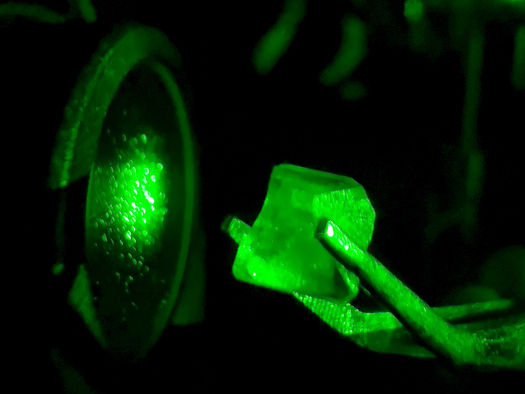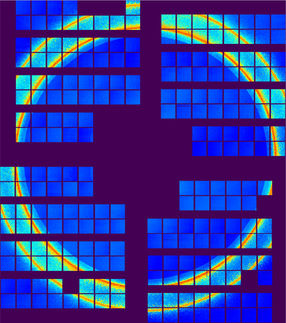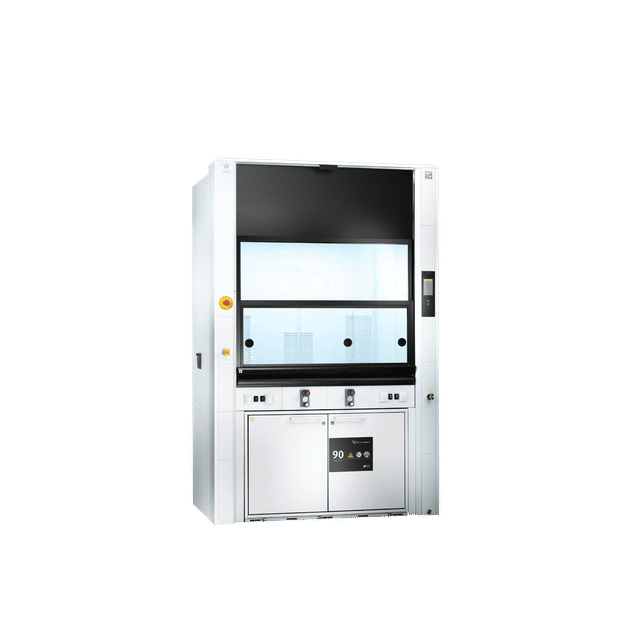Revolutionary images of the birth of crystals
A team from the UNIGE has succeeded in visualizing crystal nucleation - the stage that precedes crystallization - that was invisible until now
At the interface between chemistry and physics, the process of crystallization is omnipresent in nature and industry. It is the basis for the formation of snowflakes but also of certain active ingredients used in pharmacology. For the phenomenon to occur for a given substance, it must first go through a stage so-called nucleation, during which the molecules organize themselves and create the optimal conditions for the formation of Crystals. While it has been difficult to observe this pre-nucleation dynamics, this key process has now been revealed by the work of a research team from the University of Geneva (UNIGE). The scientists have succeeded in visualizing this process spectroscopically in real time and on a micrometric scale, paving the way to the design of safer and more stable active substances. These results can be found in the Proceedings of the National Academy of Sciences (PNAS).

The scientists used lasers to reveal the molecular structure at work during nucleation, but also to induce nucleation and observe its spectral fingerprint.
Oscar Urquidi
Crystallization is a chemical and physical process used in many fields, from the pharmaceutical industry to food processing. It is used to isolate a gaseous or liquid substance in the form of crystals. However, this phenomenon is not unique to industry; it is ubiquitous in nature and can be seen, for example, in snowflakes, coral or kidney stones.
For crystals to form from substances, they must first go through a crucial stage called nucleation. It is during this first phase that the molecules begin to arrange themselves to form ‘nucleus’, stable clusters of molecules, which leads to the development and growth of crystal. This process occurs stochastically, meaning it is not predictable when and where a nucleus form. “Until now, scientists have been struggling to visualize this first stage at the molecular level. The microscopic picture of crystal nucleation has been under intense debate. Recent studies suggest that molecules seem to form some disordered organization before the formation of ‘nuclei’. Then how does the crystalline order emerge from them? That is a big question!”, explains Takuji Adachi, assistant professor in the Department of Physical Chemistry at the UNIGE Faculty of Science.
Capturing one crystal nucleation event at a time
Takuji Adachi’s team, supported by two researchers from the Department of Chemistry at McGill University (Nathalie LeMessurier and Lena Simine), has taken a decisive step by succeeding in observing the nucleation process of an individual crystal at the micrometric scale by optical spectroscopy. “We have succeeded in demonstrating and visualizing the organization and formation of molecular aggregates that precede crystallization,” explains Johanna Brazard, a researcher in the Department of Physical Chemistry and co-first author of the research.
To observe this phenomenon, the scientists combined Raman microspectroscopy - a technique based on the interaction of light with matter to obtain information on its composition - and optical trapping. “We used lasers to highlight the molecular structure during the nucleation but also to induce the nucleation phenomenon and thus be able to observe it and record its spectral imprint”, explains Oscar Urquidi, a doctoral student in the Department of Physical Chemistry and co-first author of this research. The model substance chosen to conduct these experiments was glycine, an amino acid that is an essential building block of life, dissolved in water.
“Our work has revealed a stage of crystallization that was previously invisible, says Takuji Adachi. Visualizing more precisely and better understanding what is happening at the molecular level is very useful for directing certain manipulations more effectively.” In particular, this discovery could make it easier to obtain purer and more stable crystal structures for certain substances used in the design of many drugs or materials.
Other news from the department science
Most read news
More news from our other portals
See the theme worlds for related content
Topic World Spectroscopy
Investigation with spectroscopy gives us unique insights into the composition and structure of materials. From UV-Vis spectroscopy to infrared and Raman spectroscopy to fluorescence and atomic absorption spectroscopy, spectroscopy offers us a wide range of analytical techniques to precisely characterize substances. Immerse yourself in the fascinating world of spectroscopy!

Topic World Spectroscopy
Investigation with spectroscopy gives us unique insights into the composition and structure of materials. From UV-Vis spectroscopy to infrared and Raman spectroscopy to fluorescence and atomic absorption spectroscopy, spectroscopy offers us a wide range of analytical techniques to precisely characterize substances. Immerse yourself in the fascinating world of spectroscopy!































































